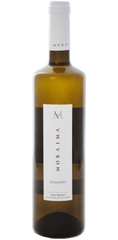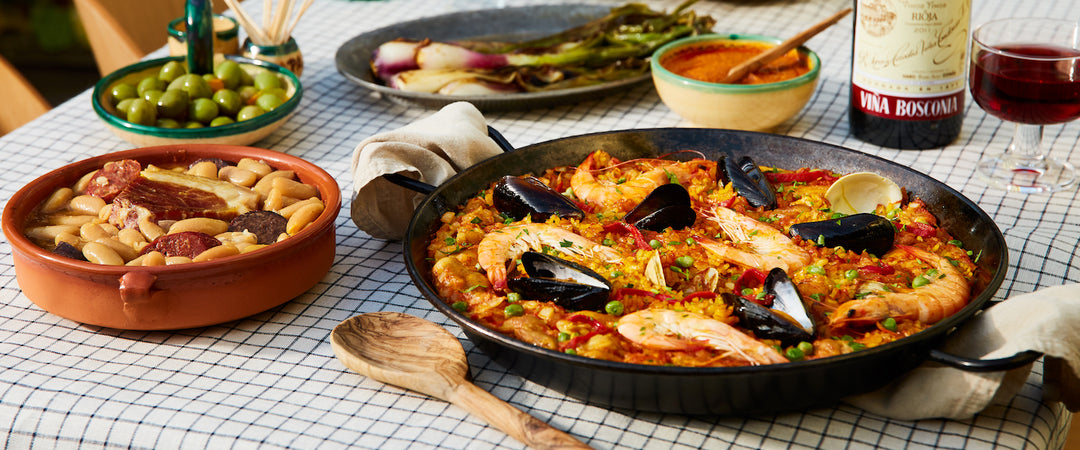February 2024 Blanco Y Tinto Wine Club Wines
Our Crianza club exploration of Spanish wines continues with the 2018 Fuerza Bruta by A Pie De Terra from the foothills of the Sierra De Gredos and the Moraima Albariño from the Rias Baixas D.O., a region in Northwestern Spain (known as "Green Spain" due to its significant rainfall.) Each of the two regions poses unique challenges to conventional grape growing. This club drop not only highlights the diversity of Spain's wine regions but also the adaptability and creativity of its winemakers in producing distinct and memorable wines.
February Blanco Y Tinto Wine #1: A Pie De Tierra 2018 Fuerza Bruta
Fuerza Bruta translates to “brute force”, something I don’t normally equate with wine. Seeing that none of the wine’s sales literature had any explanation, I did a bit of Googling. The first 100 search results pointed to an Argentinian dance troupe that apparently puts on “an uninhibited and unforgettable show you have to see to believe!” While that sounds like a great way to end “Dry January”, opening a bottle of a fun new wine seems much easier than traveling to Buenos Aires to see the show.
THIS Fuerza Bruta is made by the dynamic duo at “A Pie De Terra”. Formed in 2015, Pie de Terra is one part Aitor Paul, a Madrid sommelier, and one part David Villamiel, a Méntrida winegrower. Both trained at the Viticulture and Enology Professional School of Madrid, going on to internships at Bodegas Valquejigoso and Comando G, respectively. The latter is especially well known for their outstanding work of bringing the full expression of the granitic soils of Sierra de Gredos (in the greater Madrid DO) to the glass with their stellar wines.
David and Aitor’s work together started with David’s family’s land, which consists of 20 hectares distributed across Méntrida, supplemented with an additional 4-5 hectares located within the same riverbed but belonging to the neighboring municipality of Aldea del Fresno, Madrid. The grapes for this wine come from 60-year old vines growing in granitic alluvium (think decomposed granite) soil amongst oaks, willows, and ash. The grapes were fermented whole-cluster for 35 days, resulting in a light, translucent wine. The wine was aged in large Galician chestnut foudres, which allow controlled oxidative aging without imparting oak flavors and tannins.
The result is a lively, fresh nose of red and black raspberry that carries into the palate where it’s joined by hints of earth and dried twigs. It’s a clear red in the glass, lithe in body, yet with enough grainy tannins to remain serious. It further develops with time, the opened bottle making for joyous second-day drinking with added hints of warm spices. With the recent storms, it seems like the perfect wine to sip and savor, warm and dry, while watching nature’s fuerza bruta rage outside. – BMS
February Blanco Y Tinto Wine #2: A Pie De Tierra 2018 Fuerza Bruta
It’s hard to imagine Spain without its glistening sunshine and boiling hot days. However, in the Rias Baixas D.O., in Northwestern Spain, the weather may surprise some folks. Think wet, damp and cool – not all that different from the weather we just experienced the past couple weeks. This region is often referred to as “Green Spain” due to the fact that Rias Baixas averages 67 inches (1700mm) of rain annually.
With all this rainfall, the locals actually have over a hundred different words and phrases to describe the rain. These include words in Spanish and the local Gallego dialect such as chuvia (regular rain), babuxada (soft persistent rain with windy conditions), babuña (rain that reflects the sound of a drooly baby), arroiada (strong rain), and torbón (rain with lightning and thunder). The rainy season typically lasts from late September to April, with January and February usually the wettest.
Growing grapes in this climate is tricky. To counter the rain and humidity, most vines are trained on a wire trellis called a “parra”, anchored by granite posts. The parras are up to seven feet high, allowing breezes to flow through for maximum circulation, helping to prevent mildew and promote even ripening. At Viña Moraima, the old-vine Albariño grapes are pergola-trained and widely spaced, keeping fungal problems at bay. Grapes are handpicked, sorted, and destemmed, ensuring only the highest quality grapes are used. Aged in stainless steel tanks on the lees for 6 months, Moriama Albariño is a great example of terroir.
This 2022 vintage is pale lemon yellow with a bit of a silvery tint. On the nose, high aromatics of white flowering tree blossoms capture my attention immediately while the fleshy fruits, wet rocks and saline remind me of stepping outside after the storm has passed. On the palate, this wine is balanced, with refined acidity and a silky mouthfeel. Tart fruits, and minerality drive the long finish. I would pair this with an octopus dish such as Pulpo Gallego, the classic Galician octopus tapa. This could also be paired with a mild cheese or other fresh seafood. Salud! — AP





